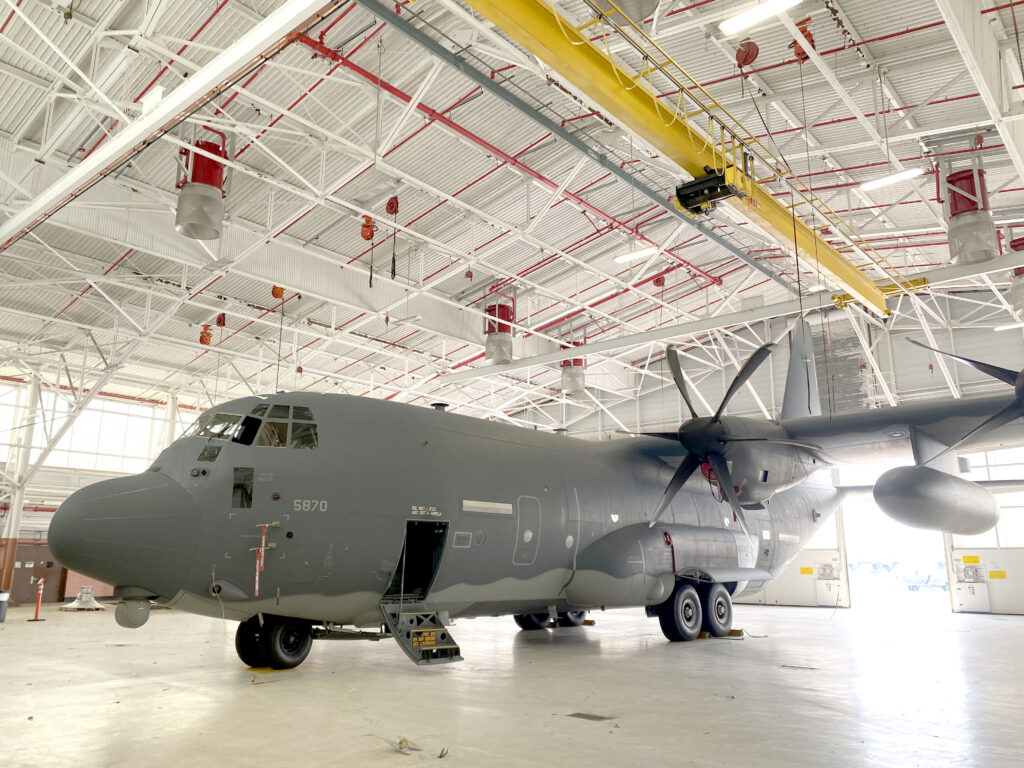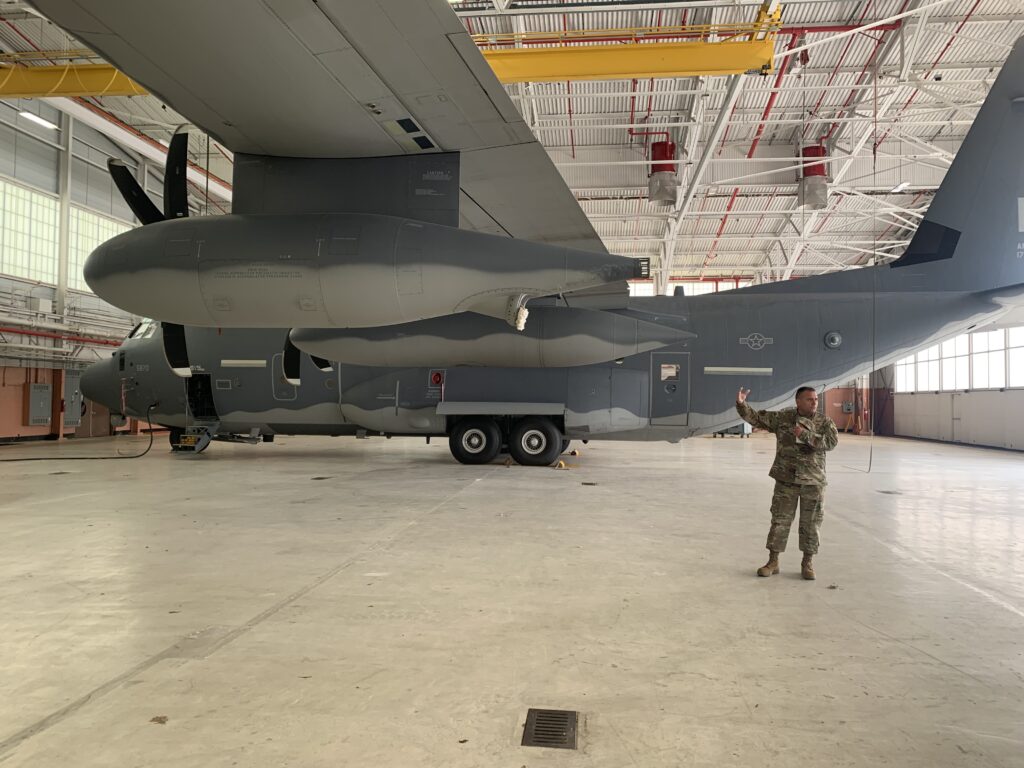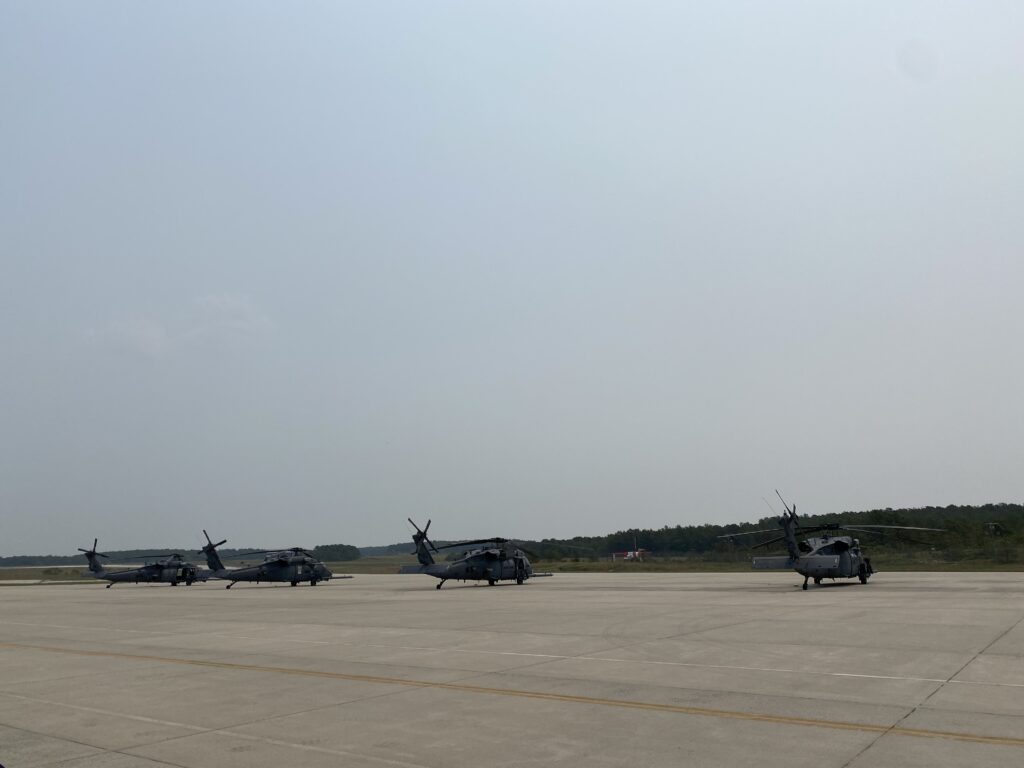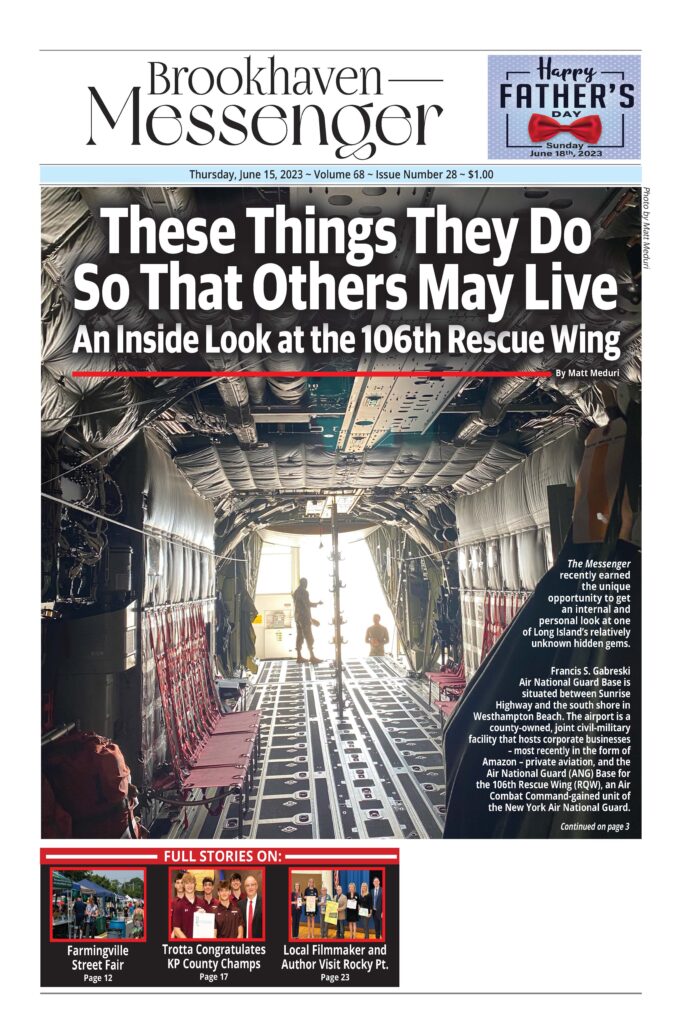The Messenger recently earned the unique opportunity to get an internal and personal look at one of Long Island’s relatively unknown hidden gems.
Francis S. Gabreski Air National Guard Base is situated between Sunrise Highway and the south shore in Westhampton Beach. The airport is a county-owned, joint civil-military facility that hosts corporate businesses – most recently in the form of Amazon – private aviation, and the Air National Guard (ANG) Base for the 106th Rescue Wing (RQW), an Air Combat Command-gained unit of the New York Air National Guard.

The base was originally constructed as a Suffolk County Army Airfield in 1947 after World War II. When the Air Force reclaimed the base in 1951, it became the Suffolk County Air Force Base and was part of the Eastern Air Defense Force of the New York City metropolitan area.
After funding downturns during the Vietnam War, the base was deactivated and returned to the Suffolk County government for civilian aviation. The airport functioned as Suffolk County Airport from 1969-1991, and as the Suffolk County Air National Guard Base since 1970 when a military presence was reintroduced. The base was renamed to Francis S. Gabreski Airport in 1991.
The namesake for the airport, Francis Stanley Gabreski, achieved the rank of colonel in the United States Air Force. The son of Polish immigrants, he was the top American Army Air Force fighter ace of Europe in World War II and a jet fighter ace during the Korean War. He was credited with the destruction of 34.5 aircrafts and is just one of seven U.S. pilots to become an ace in two wars. He also spent eleven years commanding fighter squadrons. After his time in the Air Force, he served a two-year stint as head of the Long Island Rail Road, after which he retired. He passed away in 2002.
One of the numerous local outlets to be invited, The Messenger reported to the base on June 7 and did not leave disappointed. Not only were two hallmark aircraft on display to be toured, but leadership also shared their views on how important this base is and how much of an asset this base is not only for Long Island, but for the nation overall.

Chief Master Sergeant Harold Rowan (pictured above), of Commack, started the tour with a visual presentation of what the base’s purpose is and how effective they are in their rescue efforts. In addition to coordinating efforts often seen in the movies – the 2000 film The Perfect Storm is a dramatized telling of the 106th Rescue Wing’s actions during the “Perfect Storm
of 1991” – he also believes that the public should know just how much of an asset is produced mostly by people local to them.
“Most people don’t realize what we are capable of, and what comes out of Westhampton Beach.” Chief Rowan also notes his base employs “born-and-raised Long Islanders.”
Chief Rowan outlined some of the prerogatives that the base takes, including “worldwide recovery, combat search and rescue, civil regular search and rescue, humanitarian contingencies, disaster relief, regional conflicts, sometimes – unfortunately – going off to war.” He explained the logistical network that keeps the base and others like it operating, including 150 different positions from getting the aircraft in the air to providing medical care, as well as maintenance of the facilities and the vehicles around, to name a few.
What also makes Gabreski base so special, according to Chief Rowan, is their “unique capability of mid-air refueling,” namely associated between the HC-130J Combat King and the HH-60G Pave Hawk helicopter.

To prepare for life-saving civil search and rescue, Chief Rowan explained that in addition to 6 months of medical training, which all pararescue personnel attend. They also attend 12 months of search and rescue training to learn “parachute jumping, orientation and survival for mountains, desert, jungle, water-related, and winter scenarios to be able to go into an environment to save lives.”
But Chief Rowan says that the uniqueness of the base is not only confined to the actionpacked feats performed at Gabreski, but rather something that’s intrinsic to the United States military overall:
“What makes the United States military so unique is that we think about our people first,” Chief Rowan says. “If you see other services around the world, it’s mostly the missions; with us, it’s always the people first. If something happens to you, we’re coming to rescue you.”
The 106th RQW has been present in search-and-rescue missions, as well as responding to large-scale disasters such as the September 11 attacks, Hurricane Sandy, and even some overseas missions. They also played a big role with the COVID-19 pandemic, where they operated testing and vaccination sites and assisted in New York City hospitals with patients and ventilators. “We dispatched our EMTs throughout the state to help out in various nursing homes,” Chief Rowan added.
The 106th RQW takes an oath both to the governor and to the president: “We respond to missions throughout the state, country and all over the world,” said Chief Rowan.
“If the governor gets on the phone and says we need to act, we can be ready to load the vehicles and send rescuers immediately,” Chief Rowan says of the continuous on-call status the base maintains with state and federal leadership.
The officials at Gabreski Airport gave The Messenger tours of the HC-130J Combat King II and HH-60G Pave Hawk Helicopter.
The HC-130 is “one of the only dedicated fixed-wing Personnel Recovery platform in the Air Force inventory. Its mission is to rapidly deploy to execute combatant commander directed recovery operations to austere airfields and denied territory for expeditionary, all weather personnel recovery operations to include airdrop, helicopter air-to-air refueling, and forward area ground refueling missions.”
Chief Rowan gave The Messenger a tour of the plane, namely of the main fuselage that contains multiple modular capabilities for seating dozens of passengers or housing palettes of cargo to be parachuted out the back. A walk-around of the aircraft was also included, showcasing the large rear ramp and door for loading/unloading cargo, which also includes an area for mid-air refueling.

The Pave Hawk is used primarily for “day or night search and rescue operations.” It is also tasked to perform military operations that include medical evacuation, disaster response and other humanitarian efforts.
The in-depth look at the fantastic marvels of military engineering, as well as the full look inside a day in the life of the members of the 106th Rescue Wing comprehensively shows another way of just how important and unique Long Island is not only on the national stage, but the global stage.
The Messenger thanks the men and women of the 106th Rescue Wing and the New York Air National Guard for all they do so that others may live.






